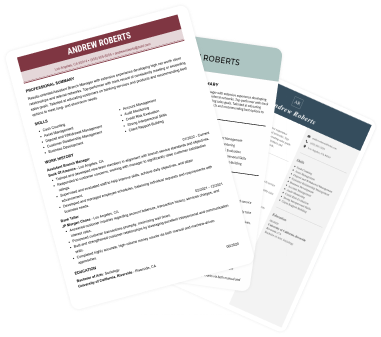Create a professional CV now!
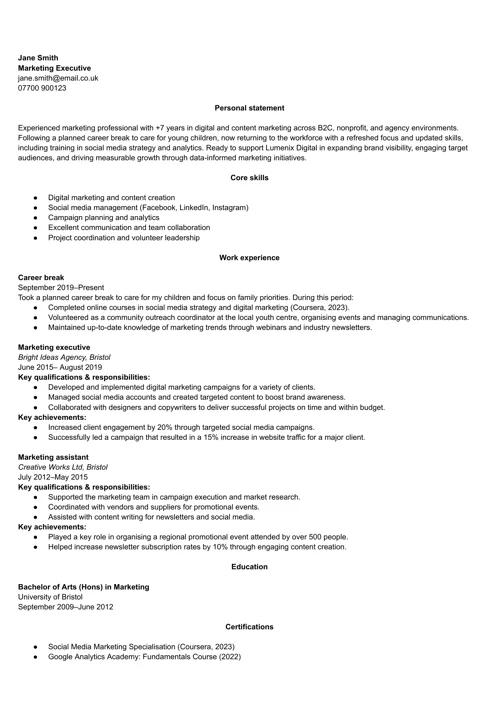 NO
NO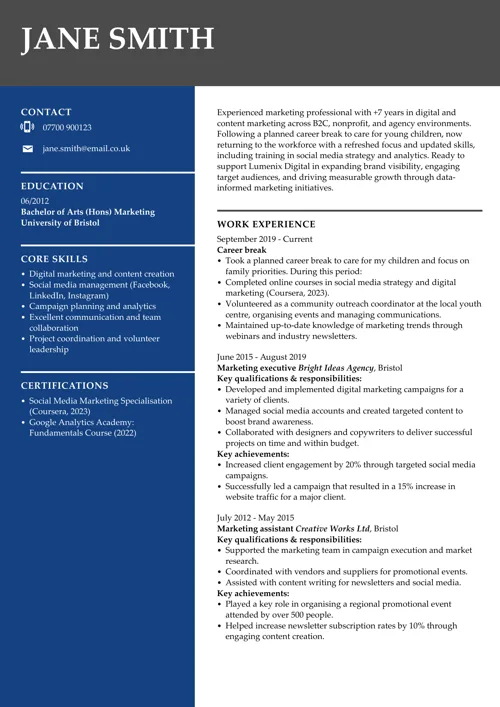 YES
YESLast updated on 13 November, 2025
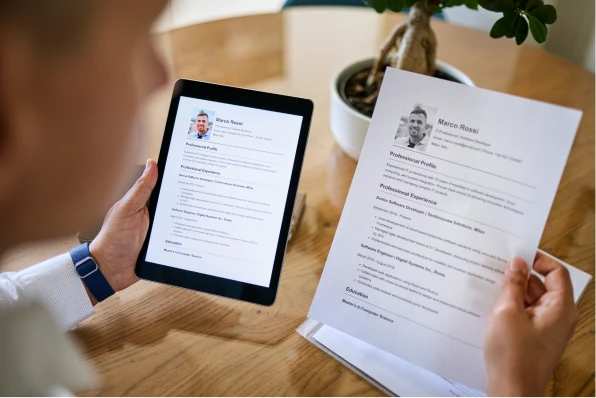
Taking a career break doesn’t have to hurt your job prospects. In fact, it can highlight your adaptability and growth. Whether you paused to raise a family, travel, study, or recover, it’s all about how you present it.
This guide will show you how to explain a career break on a CV, when and where to include it, and provide real-world career break CV examples. Learn how to turn your time away into a strength that employers will respect.
Create an effective CV in minutes. Choose a professional CV template and fill in every section of your CV in a flash using ready-made content and expert tips.
Create a professional CV now!
 NO
NO YES
YESWe created the sample on the right using our builder. See other good CV examples like this one.
Looking for other actionable tips to support your career journey? Check these out:
A career break on a CV reflects a specific time when you weren’t engaged in formal paid work. This gap in your employment history can occur for various reasons, such as parenting, travel, personal health issues, further education, or professional development. Including a career break in your CV is entirely acceptable. The key is to present it positively and highlight any relevant skills, experiences, or growth you gained during that time.
Many job seekers ask: “Should I put a career break on my CV?” The answer is yes, especially if the break is recent or would otherwise leave a suspicious gap in your timeline. Being upfront adds credibility and allows you to showcase the skills or personal growth you achieved during that period.
One of the most common questions people ask is: “How do I explain a career break on my CV without harming my chances?” The answer is: with clarity, honesty, and relevance.
Rather than avoiding the subject, takeownership of your break and use it as anopportunity to showcase your adaptability, values, and transferable skills. Whether your break was planned or unexpected, employers appreciate candidates who are transparent and self-aware.
Here’s how to explain a career break on a CV effectively:
Avoid vague wording or skipping over the break entirely. If you don't acknowledge it, hiring managers may assume the worst. A simple one-liner is often enough:
Career Break
January 2023–January 2024
Took time away from the workforce to care for a family member. Now fully available and ready to re-engage professionally.
This shows maturity and readiness to return.
Even if you weren’t working, chances are you were learning, managing, or developing something. Whether you were homeschooling children, organising complex travel, or managing a health recovery plan, you’ve gained relevant skills.
During this time, developed strong organisational and problem-solving skills while overseeing household logistics and supporting the children’s education.
This sort of framing can help employers see you in a positive light.
Make it clear that the break is over, you’ve kept your professional skills sharp, and you’re motivated to rejoin the workforce.
Now fully focused on returning to work and excited to apply both previous professional experience and the perspective gained during the time away.
By including this kind of statement, your CV after a career break can feel more confident and future-focused.
A strong CV summary will convince the recruiter you’re the perfect candidate. Save time and choose a ready-made personal statement written by career experts and adjust it to your needs in the LiveCareer CV builder.
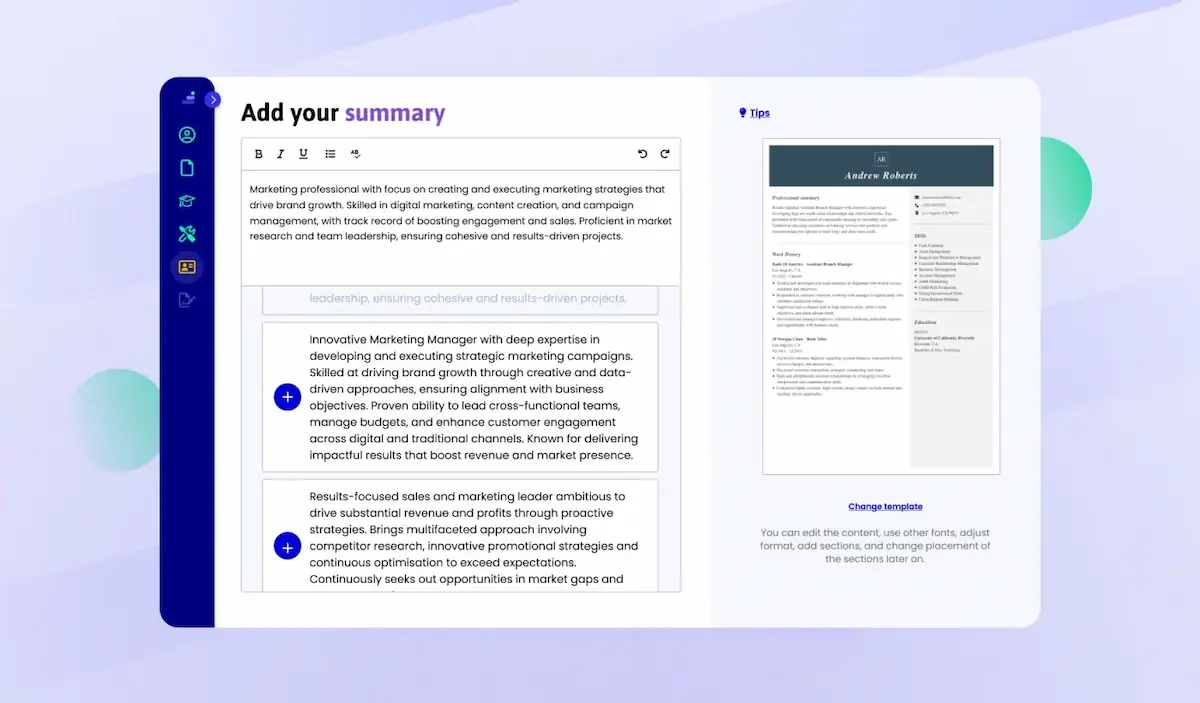
The Chartered Institute of Personnel and Development (CIPD) estimates that around 90,000 people in the UK take a career break each year, highlighting the continuous flow of professionals stepping away from and returning to the workforce.
According to LinkedIn, women are more likely to take a career break to focus on parenting, while men are more often motivated to step away to pursue professional development. In fact, over a third of women cite full-time parenting as the reason for their break, compared to less than 1 in 10 men. Meanwhile, professional development is the most common reason given by men, at just over 15%.
There are many legitimate and relatable reasons to take time away from work. When thinking about how to explain a career break on your CV, your reason matters – not because employers will judge it, but because it provides context.
Here are some common career break CV examples by reason, each with longer explanations to guide your wording:
Taking time out to focus on your children is one of the most common reasons for a career break. Employers recognise the commitment and skill it takes to raise a family, and increasingly view this as a valid life choice rather than a professional weakness.
Career Break
September 2021–January 2024
Took time out to raise two young children. Maintained involvement in the professional field by attending webinars and keeping up with industry trends. Now fully available and eager to resume a career in project management with renewed focus and energy.
This demonstrates that you were proactive and committed to your professional identity, even during your break.
If your break was for physical or mental health reasons, there’s no need to go into medical detail. A simple acknowledgement, followed by a focus on your recovery and current readiness, is sufficient.
Career Break
June 2022–March 2023
Took time away to focus on personal health and recovery. Now fully recovered and excited to return to a structured, high-performing role in IT support, with resilience and new personal insight that enhances my working style.
This example strikes a balance between honesty, confidence, and reassurance.
Extended travel can be a valuable asset, especially if you have learned a language, volunteered abroad, or developed a deeper cultural understanding.
Career Break
March 2023–February 2024
Undertook a planned sabbatical to travel across South America and Asia. Gained enhanced adaptability, cultural awareness, and communication skills, with a focus on applying these strengths in a globally oriented customer service role.
In this case, the travel break shows initiative and personal growth.
If you pursued further education or completed courses, you can easily turn your career break into a plus.
Career Break
January 2022–December 2022
Used this time to pursue a Level 6 Diploma in Digital Marketing and completed several certifications in Google Analytics and SEO. Now eager to return to a full-time marketing role with updated digital skills and a forward-thinking mindset.
This is a perfect example of how to put a career break on a CV while highlighting progress.
Sometimes, a break is used to reassess goals and make intentional changes. Employers often appreciate the self-awareness this shows.
Career Break
May 2022–November 2023
Took time to reflect on long-term career goals, develop a new career strategy, and pursue self-directed training in user experience design. Now actively applying for junior UX roles with a clear direction and enthusiasm.
This example shows clarity, purpose, and initiative.
The best place to put a career break on your CV depends on its length, recency, and relevance. Here are the most common and effective options:
Include the break as a clearly labelled entry in your employment section, just like a job. Give it a title such as “Career Break,” followed by the dates and a brief explanation. This helps maintain chronological clarity and avoids mysterious gaps.
Career Break
January 2023–January 2024
Took a year to care for a family member. Now fully available and actively pursuing roles in HR administration.
If the break is recent or ongoing, it may help to mention it upfront in your personal profile:
Completed a year-long career break to earn a diploma in IT. Currently seeking a role that leverages strong technical and problem-solving skills in a fast-paced environment.
Use your cover letter to provide a little more context. This is a great place to reassure employers of your enthusiasm and qualifications, especially if your break was unusual or lengthy.
The format of your CV can significantly affect how your career break is perceived. Here are the most effective formats to consider if you're returning to work after time away:
If you have a strong, consistent work history before your break, a chronological CV is still a solid choice. List your break within the timeline and keep the focus on your work experience and accomplishments before and after.
If your break was lengthy or involved a significant change in direction, use a skills-based CV to highlight your abilities instead of your timeline. This allows you to present your most relevant competencies upfront.
This format combines both, starting with a skills summary and followed by your career history. It works especially well for those with non-linear paths or multiple career breaks.
Choosing the best format for your situation can help bridge gaps while highlighting your strengths, making it perfect for building a strong CV after a career break.
Getting back into the workforce can feel daunting, especially if you've been away for a year or more. But with some preparation and confidence, your return can be a smooth one.
Here are practical steps to help:
To reinvigorate your professional mindset and skills, consider taking a short course, volunteering, or completing a project. This can be especially helpful when explaining a career break in a CV or during an interview.
Reach out to former colleagues or attend local events and online meetups. A warm lead is often the quickest path back into a job.
Consider carefully how to describe a career break on your CV and during interviews. Keep it honest, positive, and future-focused. Confidence, not apology, is the key to a triumphant return.
Taking a career break doesn’t disqualify you from being an excellent candidate. On the contrary, it can demonstrate emotional intelligence, resilience, and strategic thinking – all qualities employers admire.
Are you looking for additional career resources? Check these guides:
You don’t have to be a CV writing expert. In the LiveCareer CV builder you’ll find ready-made content for every industry and position, which you can then add with a single click.
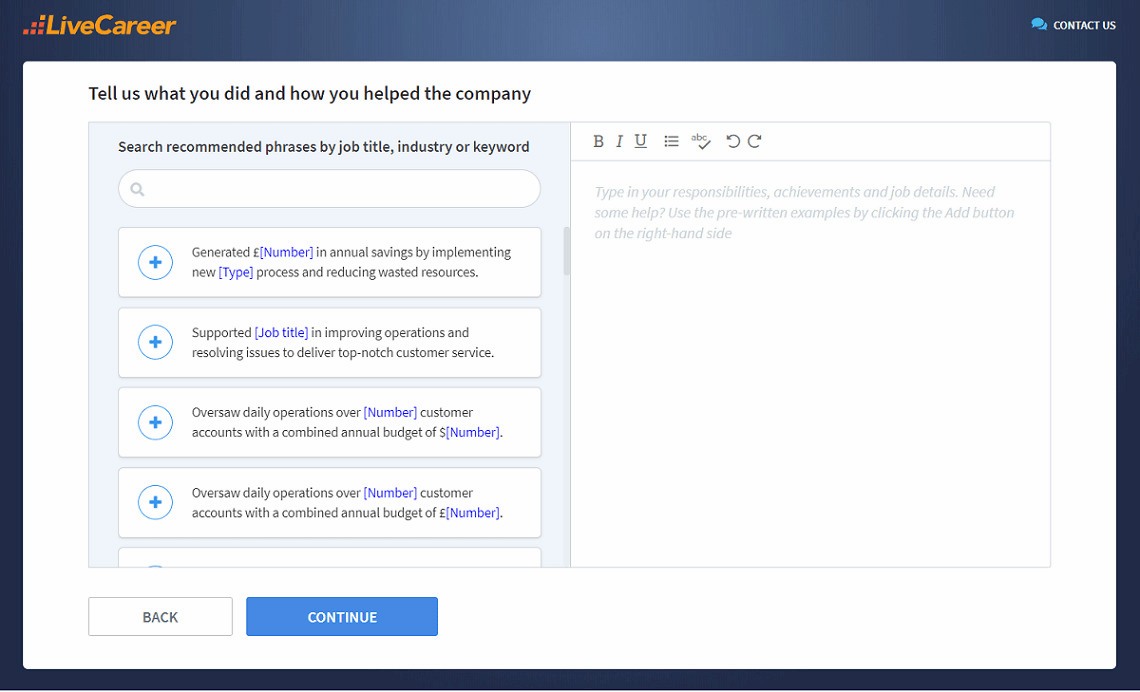
Do you put a career break on your CV? Yes, and you should place it where it makes sense, in a confident and structured way. Whether you’re updating a career break CV, deciding “should I put a career break on CV?”, or crafting a career break on a CV example that fits your journey, remember this: the gap doesn’t define you. Your skills, attitude, and readiness to return do.
Thank you for reading my article. Feel free to explore our other blog posts to learn more about how to shape your career in the best possible way!
Our editorial team has reviewed this article for compliance with LiveCareer’s editorial guidelines. It’s to ensure that our expert advice and recommendations are consistent across all our career guides and align with current CV and cover letter writing standards and trends. We’re trusted by over 10 million job seekers, supporting them on their way to finding their dream job. Each article is preceded by research and scrutiny to ensure our content responds to current market trends and demand.
Category: CV Help
Crafting a job-winning CV is all about showcasing your unique skills and experiences. Start with a strong personal statement that highlights your career goals and achievements.
Try Our CV Builder Now